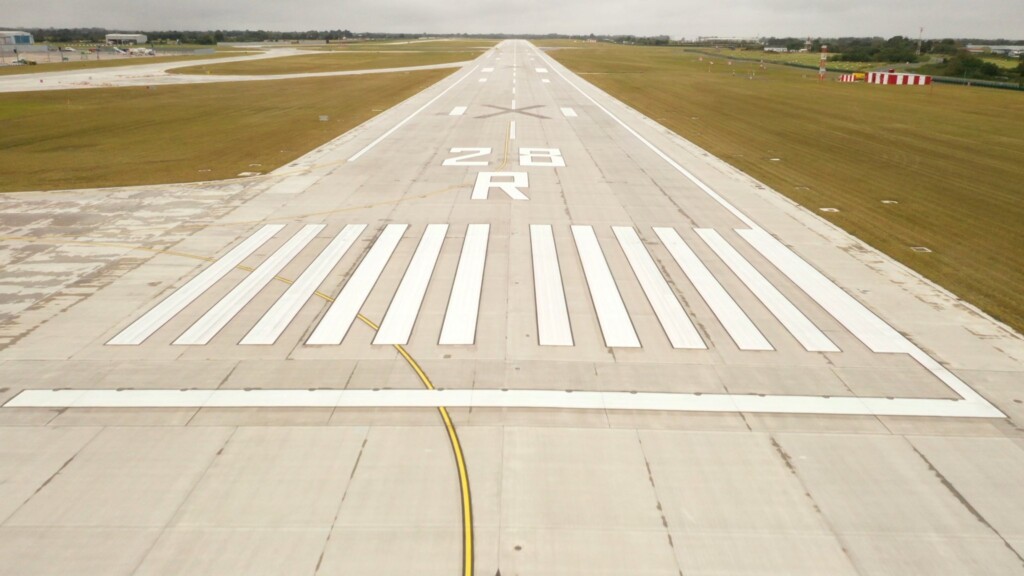Ryanair has called on Minister for Transport Eamon Ryan to scrap the cap on 32 million passengers at Dublin Airport, claiming it would result in 1 million less seats being made available to passengers in the winter months.
The airline claims that the cap is “artificial” and would result in travel disruption for people travelling during the October mid-term breaks, sporting events and pulled the “families returning home for Christmas” card.
Ryanair has stated that should the cap remain in place it would result in prices returning to 1980s levels, a claim that was not backed up with evidence.
The airline called on voters to vote for candidates who would “take action to lift the cap and save Irish tourism, jobs and the economy from irreparable damage.”
“Irish citizens should not be penalised for the DAA’s repeated mismanagement of Dublin Airport,” they said.
“Only DAA mismanagement could deliver less capacity with a second runway,” they remarked.
Speaking to RTÉ last September, Dublin Airport boss Kenny Jacobs said he was in favour of scrapping the cap, saying it would benefit Ireland’s economy.
“Ireland’s ability to maximise growth opportunities, in terms of additional jobs and economic activity, would go a long way to enabling Ireland to accommodate the strong population growth that it is expecting over the decades to come,” he said at the time.
Jacobs was adamant that the cap should be raised, saying that Ireland would lose out on hosting major sporting or music events if the cap remains in place and it would result in potential business being driven towards airports in the United Kingdom.
Ryanair repeated their calls for Eamon Ryan to resign as Minister for Transport, saying that Ireland needs a Minister for Transport who will “actually implement the National Aviation Policy, unlike Minister Ryan who has continued to dither and dodge and has caused irreparable damage to Ireland’s tourism by sitting on the fence and letting local County Council planning conditions block Dublin Airport’s growth potential for possibly up to 4 years.”
For his part, Ryan said that there should be a focus on lessening Ireland’s reliance on Dublin Airport and is instead looking to make the likes of Cork and Shannon Airport a more integral part of Ireland’s airport network.
“We all know we are very lopsided in the country. All the development is happening in Dublin, but we need to see it happening in Shannon and Cork and elsewhere,” he said earlier this year.
A February article from the Irish Times reported that Dublin Airport generates the same emissions as 1.4 million cars every year, adding even more CO2 to the climate.
In January, the Environmental Protection Agency laid out the potential impact of climate change in Ireland, noting that Ireland is already seeing the effects first-hand.
In early June, Met Eireann reported that Spring was the 2nd-warmest since records began, while last July was the wettest on record.
Sixteen of the top 20 warmest years since 1900 have taken place since 1990 according to the EPA, while winter storms have become more common and intense in their frequency.
Emissions released by aviation have become a major political issue on the continent, with the French government last year banning flights between French cities that could be made by public transport.
In recent months, the Spanish government has also looked to introduce similar bans; if two cities can be reached by public transport within 2 and a half hours, they will look to ban flights between cities.
A statement by the Irish Doctors for the Environment said “expanding Dublin Airport and increasing the passenger cap in the midst of a climate crisis is simply unacceptable.”
They stated that increasing the passenger cap “is an act of overt climate denial and undermines Ireland’s emissions pledges.”
Research from the group showed that a return trip from Dublin to the Canaries emits 1 tonne of C02 per person, which is the same amount that an average person living in Africa produces in an entire year.
They cited figures from the Dublin Airport Authority that raising the passenger cap would increase emissions by 22%.
The group said “the arguments put forward by the DAA and others supporting passenger expansion need to be seen in the context of numerous damning climate and biodiversity reports. Claims about how climate-friendly Dublin Airport is and how it makes perfect sense to expand the airport and increase passenger numbers cloud the truth.”
Ryanair, for their part, invested in what they say are CO2-friendly aircraft only for Dublin Airport to say they did not meet their environmental standards.
The airline asserted they had to pull 3 aircraft, 16 routes and 200 jobs to Italy as a result of the environmental restrictions at Dublin Airport.
In turn, they dubbed the DAA’s environmental policies are “not fit for purpose.”
Eddie Wilson of Ryanair said, “this artificial cap on passenger numbers is now starting to bite, which is going to result in significantly higher airfares as demand will exceed supply.”
“Passengers will see for the first time what Minister Ryan’s inaction will do to airfares at peak periods as Ryanair and indeed all other airlines will be blocked from putting on additional flights for peak demand.”
